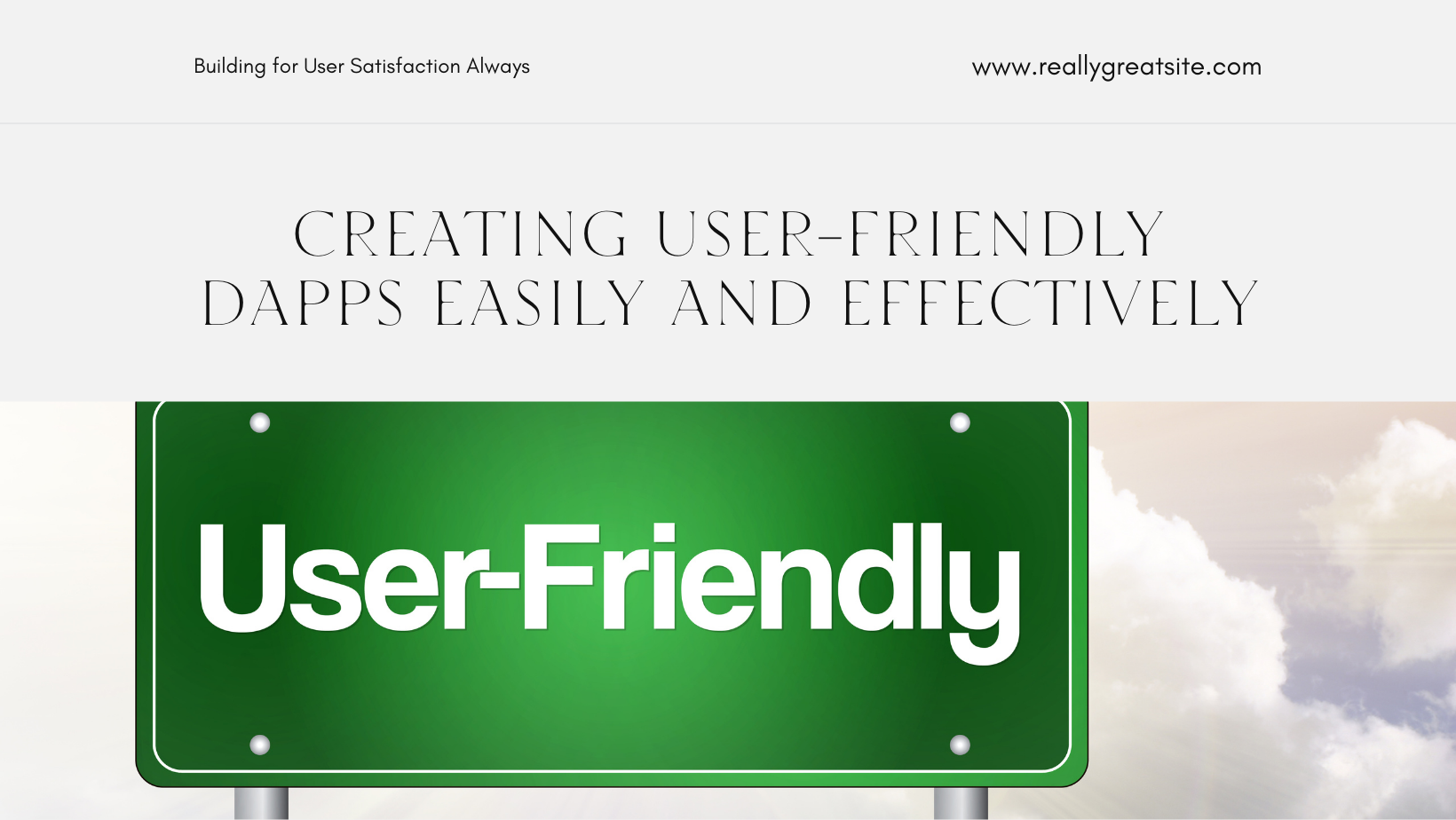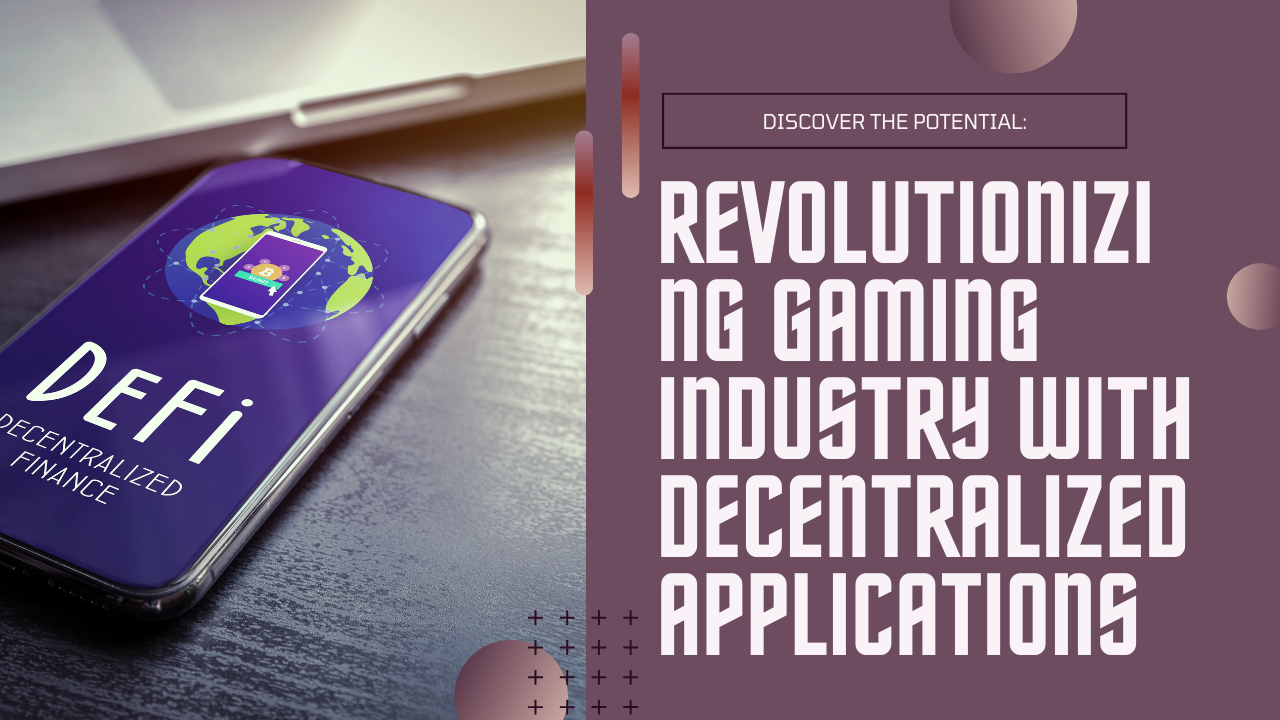Developing a user-friendly decentralized application (Dapp) is key to ensuring its adoption and usability among a broader audience. As blockchain technology continues to revolutionize industries, Sodio Technologies focuses on creating Dapps that prioritize user experience (UX) while harnessing the benefits of decentralization. In this blog, we explore essential strategies, design principles, and development considerations to help you develop a user-friendly Dapp that engages users, enhances usability, and drives adoption.
Understanding User-Friendly Dapps
User-friendly Dapps prioritize intuitive design, seamless navigation, and transparent functionality. They leverage blockchain’s capabilities, such as smart contracts and decentralized data storage, to provide secure and efficient solutions while ensuring a positive user experience. Key elements of user-friendly Dapps include:
- Intuitive Interface: Designing a user interface (UI) that is easy to navigate and understand, even for non-technical users.
- Efficient Performance: Ensuring fast transaction speeds and responsive interactions to minimize user frustration.
- Transparent Operations: Providing clear information about transactions, data handling, and smart contract execution to build trust.
Benefits of User-Friendly Dapps
- Enhanced Adoption: User-friendly design attracts and retains users, driving adoption of your Dapp within target markets.
- Improved Engagement: Intuitive interfaces and seamless interactions keep users engaged and encourage frequent usage.
- Reduced Support Needs: Clear instructions and intuitive design reduce the need for extensive user support, lowering operational costs.
Strategies for Developing a User-Friendly Dapp
1. Define Clear Objectives and Use Cases
Before starting development, define clear objectives and use cases for your Dapp. Consider:
- Target Audience: Identify the needs, preferences, and technical proficiency of your target users.
- Problem Solving: Determine how your Dapp solves existing problems or improves processes for users.
2. Simplify Onboarding and Access
Streamline the onboarding process to minimize barriers for new users:
- Clear Instructions: Provide step-by-step instructions for creating accounts, accessing wallets, and interacting with the Dapp.
- Educational Resources: Offer tutorials, FAQs, and support materials to guide users through initial setup and usage.
3. Design Intuitive User Interfaces (UI)
Focus on creating an intuitive and visually appealing UI:
- User-Centric Design: Prioritize user needs and preferences in UI design, ensuring elements are easily accessible and logically organized.
- Consistent Layout: Maintain consistency in design elements, such as color schemes, typography, and navigation menus.
4. Optimize Performance and Responsiveness
Ensure your Dapp performs efficiently across different devices and network conditions:
- Fast Loading Times: Optimize code and utilize caching techniques to minimize loading times for Dapp pages and transactions.
- Responsive Design: Design UI components to adapt to various screen sizes and resolutions for a seamless user experience.
5. Enhance Security and Trust
Implement robust security measures to protect user data and transactions:
- Secure Authentication: Utilize secure login methods and multi-factor authentication (MFA) to protect user accounts.
- Transparent Transactions: Provide real-time notifications and detailed transaction histories to keep users informed and build trust.
6. Integrate Feedback Loops
Gather user feedback to continuously improve your Dapp:
- Feedback Mechanisms: Incorporate feedback forms, surveys, or community forums to collect user insights and suggestions.
- Iterative Development: Use feedback to iterate on UI/UX design, features, and performance enhancements.
Best Practices for User-Friendly Dapp Development
1. Compliance and Accessibility
Ensure your Dapp complies with legal regulations and accessibility standards:
- Data Privacy: Adhere to data protection regulations, such as GDPR, to safeguard user privacy and information.
- Accessibility: Design Dapps to be accessible to users with disabilities, incorporating features like screen reader compatibility and alternative text descriptions.
2. Education and Support
Provide ongoing education and support to empower users:
- User Documentation: Create comprehensive guides, FAQs, and video tutorials to assist users in navigating and utilizing your Dapp.
- Customer Support: Offer responsive customer support channels, such as email, chatbots, or community forums, to address user queries and issues promptly.
3. Community Engagement
Foster a supportive community around your Dapp:
- Community Forums: Establish forums or social media channels where users can share experiences, ask questions, and provide feedback.
- Developer Engagement: Engage with developers and enthusiasts to encourage contributions, collaborations, and Dapp improvements.
Real-World Examples of User-Friendly Dapps
1. Decentralized Exchanges (DEXs)
DEXs like Uniswap prioritize simple, intuitive UIs and seamless token swapping experiences for users of all technical levels.
2. Crypto Wallets
User-friendly wallets such as MetaMask provide straightforward interfaces for managing cryptocurrency assets and interacting with Dapps.
3. Gaming Dapps
Dapps like CryptoKitties and Axie Infinity combine engaging gameplay with intuitive UX/UI design to attract mainstream users to blockchain gaming.
Future Trends in User-Friendly Dapp Development
- Mobile Optimization: Increasing focus on mobile-first Dapp designs to cater to the growing number of smartphone users.
- Integration with Web3: Leveraging Web3 technologies to enhance user interactions and enable seamless integration with other Dapps and services.
- Personalization: Customizing Dapp experiences based on user preferences and behavior to enhance engagement and retention.
Conclusion
Developing a user-friendly Dapp requires a strategic approach that prioritizes usability, security, and transparency. By focusing on intuitive design, efficient performance, and user-centric features, businesses can create Dapps that attract and retain users, driving adoption and innovation in the decentralized ecosystem. Sodio Technologies is committed to developing user-friendly Dapps that empower businesses and individuals to embrace blockchain technology with confidence.
Embrace user-centric design principles, integrate feedback from users, and continuously optimize your Dapp to deliver a seamless and rewarding user experience in the evolving landscape of decentralized applications.







